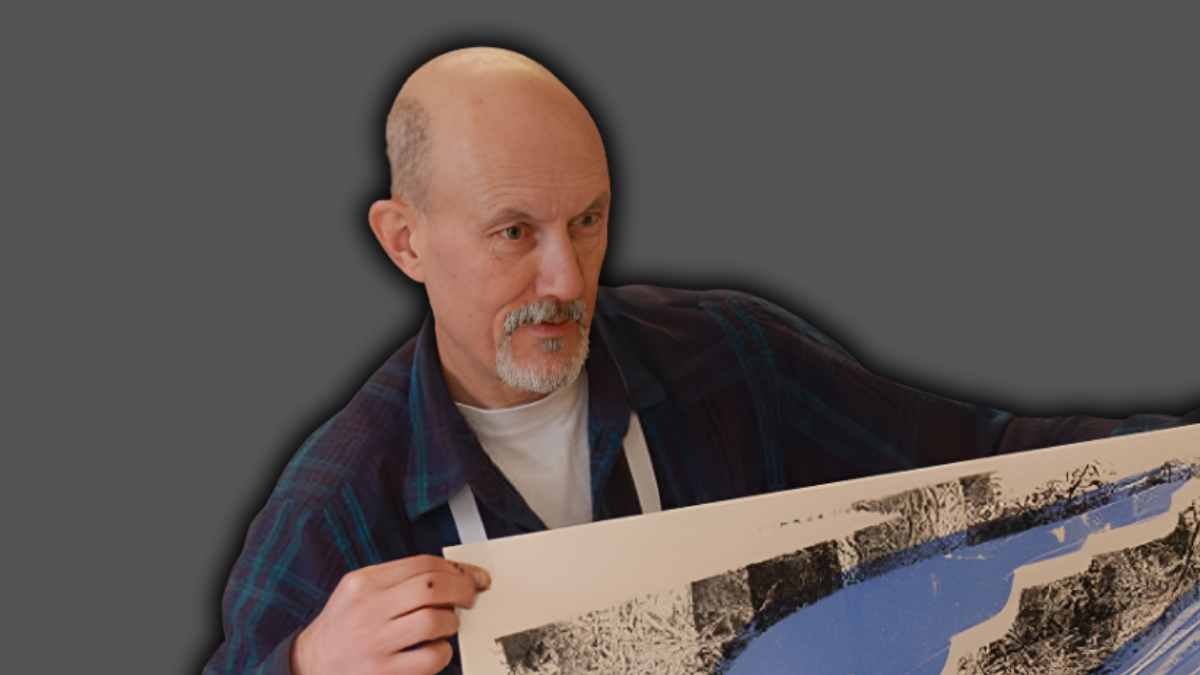Charles Shearer: A Comprehensive Insight into the Life, Artistry, and Legacy of a Distinguished British Printmaker

Charles Shearer is a respected British printmaker and illustrator known for his atmospheric, textured, and deeply expressive artwork. His prints reflect a profound engagement with landscapes, ruins, and architectural remnants, often capturing places shaped by time, weather, and memory.
Early Life and Background
Born in 1956 in Kirkwall on the Orkney Islands, Charles Shearer grew up surrounded by a landscape rich in history and natural beauty. Orkney’s rugged coastlines, prehistoric sites, and dramatic skies left a lasting impression on him. These early surroundings influenced his fascination with place, structure, and the stories that buildings can hold. The quiet isolation of the islands gave him time to observe the world closely, nurturing an eye for detail and an appreciation for landscapes that carry emotional and historical meaning.
From his youth, Shearer was drawn to drawing and experimenting with textures. Rather than being attracted to traditionally “beautiful” scenes, he was more interested in abandoned structures, derelict farm buildings, and ruins that sparked curiosity. These subjects would later become central to his artwork. His childhood in Orkney played a pivotal role in shaping a perspective grounded in atmosphere, depth, and a sensitive reading of the environment.
Artistic Education and Early Career
To advance his passion, Shearer attended Gray’s School of Art in Aberdeen. Here he began formal training in illustration and printmaking. The environment encouraged exploration and experimentation, helping Shearer refine his ability to observe and interpret physical spaces with sensitivity.
Seeking to develop his skills further, he continued his studies at the Royal College of Art in London. This institution exposed him to a wider artistic world, new approaches, and the work of established printmakers and illustrators. At the Royal College, he concentrated on illustration and the technical aspects of printmaking, gaining a deeper understanding of how images can convey mood, emotion, and narrative. His years here allowed his personal style to develop more clearly—intuitive, atmospheric, and deeply connected to landscapes shaped by time.
A Unique Artistic Voice
Charles Shearer is best known for his collagraph prints. A collagraph involves constructing a textured plate using materials like card, paper, fabric, sand, or glue. Once the plate is built, it is sealed, inked, and run through a press. This method produces prints rich in texture, containing both subtle and bold surface variations. The resulting images carry a sense of physicality that cannot be achieved through flat methods.
The collagraph technique aligns perfectly with Shearer’s artistic interests. His choice of textures mirrors the surfaces found in ruins, weathered stone, peeling paint, and industrial remnants. Each print becomes a tactile representation of place, echoing the marks left by nature and time.
Central Themes in His Work
Charles Shearer’s artwork explores several interlinked themes, all rooted in landscape and memory.
Ruins and Abandoned Structures
He often depicts derelict houses, empty farm buildings, abandoned industrial sites, and isolated towers. These structures provoke questions about the people who once inhabited them and the passage of time. His prints do not present ruins as symbols of decay but as living parts of a landscape with stories embedded in their walls.
Landscape Architecture
The artist frequently examines the relationship between human-made structures and the natural world. Stone walls, barns, bridges, and quarries sit alongside rolling hills, open skies, and stretches of coastline. Through his eyes, these spaces become places of tension and harmony, revealing how human intervention shapes the environment.
Travel and Observation
Although Shearer’s roots lie in Orkney, his work reflects inspiration from across the UK and beyond. He often sketches on location, allowing him to absorb the atmosphere before developing prints in the studio. Places in Ireland, Wales, northern England, and various European landscapes feature in his art, each processed through his own emotional and visual lens.
Atmosphere, Light, and Memory
His prints often feel quiet, contemplative, and filled with a sense of presence. By mastering tone and texture, he conveys subtle shifts in light, weather, and mood. Instead of simply showing a building or a field, he captures what it feels like to stand there.
The Printmaking Process
Shearer’s printmaking involves several stages and techniques, combining creativity with technical detail. His primary tool is the collagraph plate, built layer by layer. Once the textures are created, the plate is sealed to ensure durability. Ink is then applied to the raised and recessed areas, creating varied tonal effects. The plate is run through a press to produce prints with depth, shadow, and contrast.
Alongside collagraphs, Shearer also uses screenprinting and etching to achieve different effects. Screenprinting allows him to add bold shapes and layers of colour, while etching introduces fine lines and delicate details. His prints often combine multiple techniques, reflecting his versatility and innovative approach.
A Career in Teaching
In addition to producing artwork, Charles Shearer has taught printmaking and illustration at various art schools in the UK. His teaching career demonstrates his dedication to the craft and his desire to support budding artists. Students appreciate his balance of technical expertise and creative guidance. His calm and thoughtful teaching style complements his reflective approach to art.
Teaching keeps Shearer connected to new ideas and younger generations of printmakers. While he remains committed to traditional techniques, he encourages experimentation and exploration. This balance between tradition and innovation has made him a respected figure within the academic world of art.
Exhibitions and Recognition
Throughout his career, Charles Shearer has exhibited in galleries across the UK. His work is held in both private and public collections. Exhibitions often highlight his ability to capture overlooked spaces and transform them into captivating visual compositions.
Galleries have shown a range of his pieces, including atmospheric collagraphs featuring farm buildings, industrial remnants, and remarkable landscape formations. Works such as “The Owl House” and those from his architectural series demonstrate his mastery of texture, mood, and structure.
Collectors value his prints for their craftsmanship and emotional depth, while curators appreciate the distinctive voice he brings to modern British printmaking.
Contribution to British Printmaking
Charles Shearer has earned a respected place within the British printmaking tradition. His contribution can be understood through several key elements:
He has elevated the collagraph technique, showing how powerful and expressive it can be when used with intention and skill.
He bridges fine art and illustration, creating prints that feel expressive yet precise.
He captures landscapes not as static places but as living environments shaped by human history, weather, and memory.
He approaches ordinary or forgotten spaces with a sense of reverence, reminding viewers that beauty exists even in decline or abandonment.
His work resonates with those who appreciate subtlety, craftsmanship, and thoughtful interpretation. In a world filled with digital images, Shearer’s prints stand out for their physical texture and the human presence behind every mark.
Why His Work Connects with Viewers
Charles Shearer’s prints appeal to a wide audience because they evoke a sense of reflection, nostalgia, and curiosity. Viewers often feel drawn into the landscapes he creates, sensing the quiet presence of history and time. His attention to light and shadow gives each piece a cinematic quality, while his textured surfaces bring depth and realism.
His art invites people to look at familiar landscapes in new ways. A ruined house becomes a symbol of endurance. An abandoned farm building becomes a place of memory. A distant coastline becomes a moment of calm reflection.
Lasting Legacy and Influence
Shearer continues to influence contemporary printmakers, many of whom admire his dedication to craft and his thoughtful interpretation of landscapes. His work demonstrates the emotional power of printmaking and the importance of staying engaged with traditional techniques.
As an educator, he has guided many young artists who carry forward his lessons on texture, composition, and the importance of observing the world closely. His legacy lies not only in his own prints but also in the generations of printmakers inspired by his approach.
Conclusion
Charles Shearer stands as a significant figure in British printmaking. His life, from his Orkney Island roots to his refined training and long teaching career, has shaped a body of work that is atmospheric, textured, and emotionally engaging. Through his commitment to collagraph printmaking, his exploration of landscapes and architectural remnants, and his dedication to teaching, he has made a lasting contribution to the art world. His prints are more than images; they are meditations on place, time, and memory, inviting viewers into quiet, meaningful worlds shaped through his unique artistic lens.



